Let's compare what happens as a result of the distinctive sound sources being adjusted to the platform's mainstream LUFS-I (Integrated): -14.0. Unified items for each sound source are as follows
- Duration: 60 seconds
- peak: -3dB
1. White Noise
White noise is noise that contains all recordable frequencies at an equal level and has a flat frequency response.
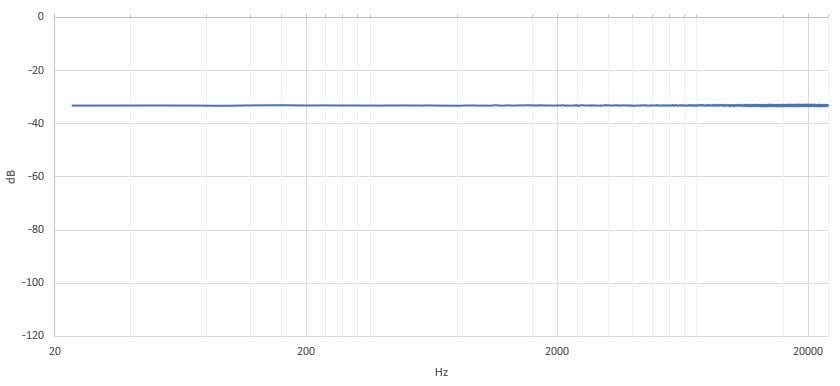
Take a look at the waveform shown below. The slightly lighter whitish color is the waveform. The purple line is the LUFS-I value, which changes with time, but remains almost constant at -4.6. You can see that it is still at -4.6 at the final 60 seconds. If you upload this to a platform such as YouTube, it will be corrected to -14 if the LUFS-I is greater than -14. This is called loudness normalization. In this case, after normalization, the LUFS-I is -9.4 lower and the LUFS-I is -14. This is a significant change in loudness.
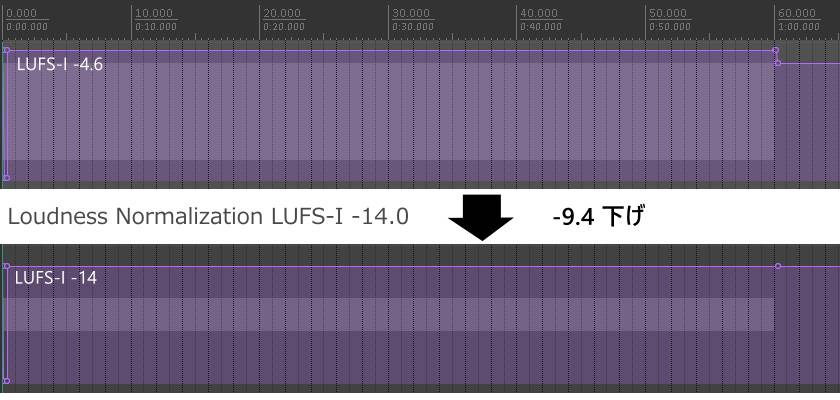
2. Pink Noise
This is a noise waveform whose frequency response drops as it goes into higher frequencies.
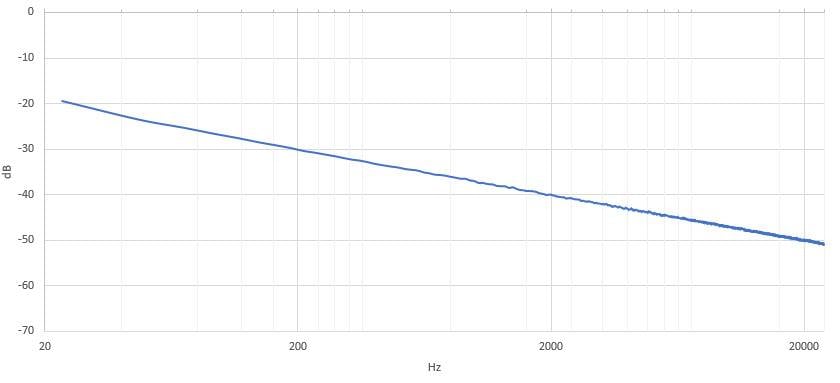
The PEAK is also -3 dB, but the LUFS-I is much lower than the white noise due to the lower level of the high frequency range. Because it’s below LUFS-I-14.0, which is the mainstream platform, it is never level-adjusted. It should be noted that frequency response has a significant impact on LUFS-I.
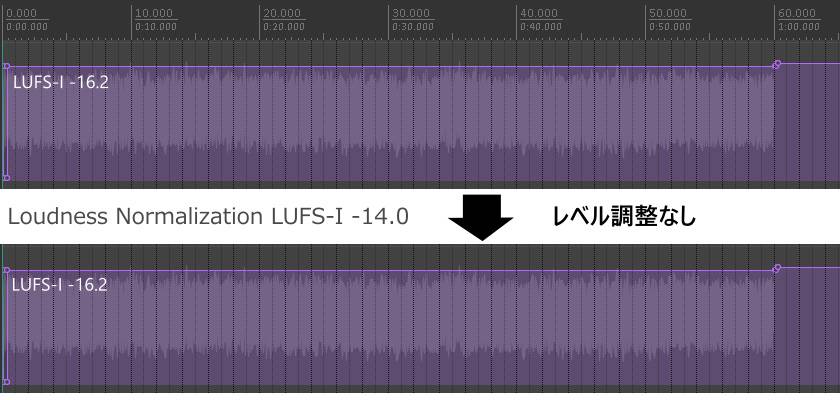
3. Brown Noise
Brown noise is characterized by a stronger energy at lower frequencies than pink noise. It has different curve characteristics, but the difference is more audible than apparent. For many people, this noise is easier to hear than pink noise. In musical ensembles, the frequency balance is often close to this.
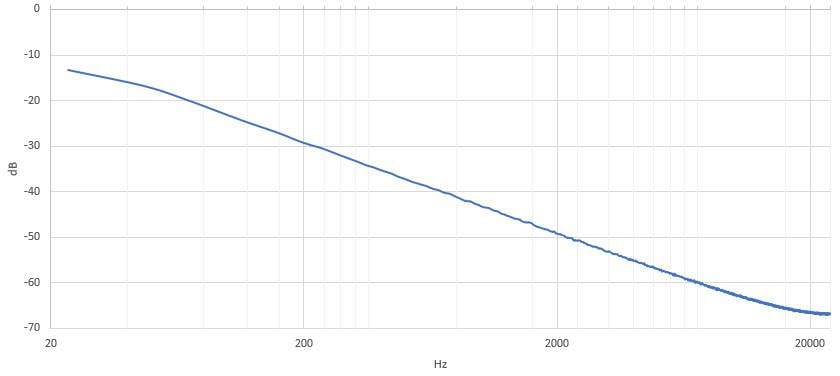
It has a lower LUFS-I than pink noise. It is also below -14.0 and is not level-adjusted. A high peak but low waste sound means the LUFS-I will not be as high.
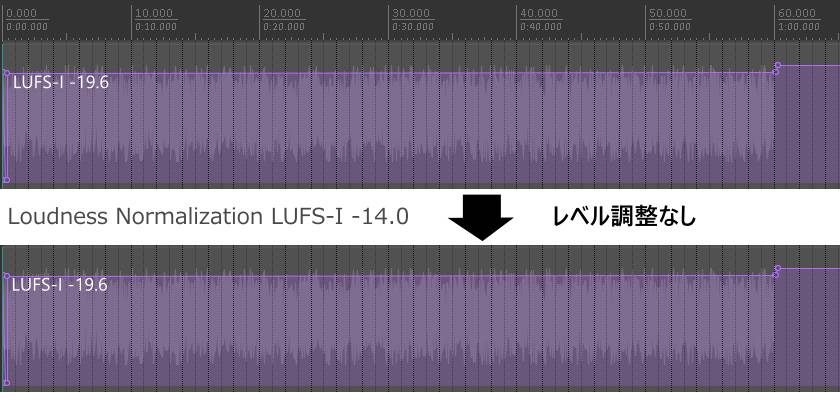
4. Blue Noise
Blue noise is a noise that increases by 3 dB for each octave increase; LUFS-I is sensitive to high frequencies and thus produces a higher value than the volume perception. This kind of sound is very unnatural and not pleasant.
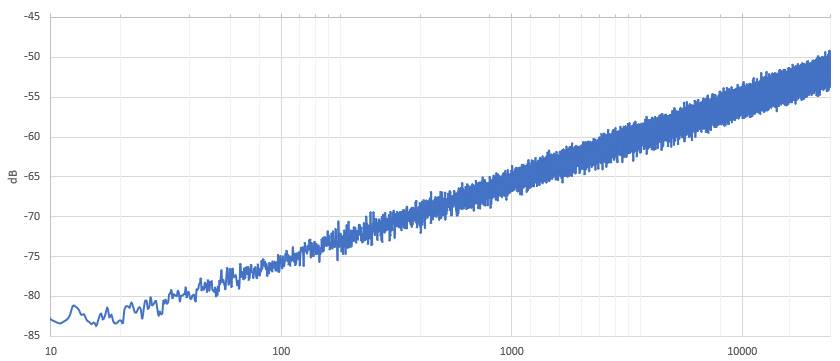
Because the loudness meter is more sensitive above 3 kHz, blue noise, which has a high frequency component, is lowered by -6.2 during normalization. It is not as bad as white noise, but close to it.
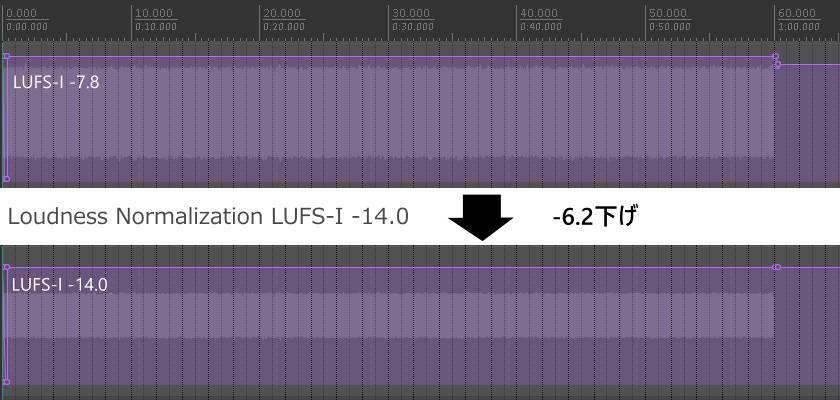
5. Noise Waveform Only Above 10 kHz
Let's try an extreme case of noise only above 10 kHz. This is a frequency that the human ear is less sensitive to on a dare, but the loudness meter is sensitive to. The sound will sound like the buzzing of summer insects, but this artificial sound is not pleasant. For most people, the loudness is not as loud as white noise.
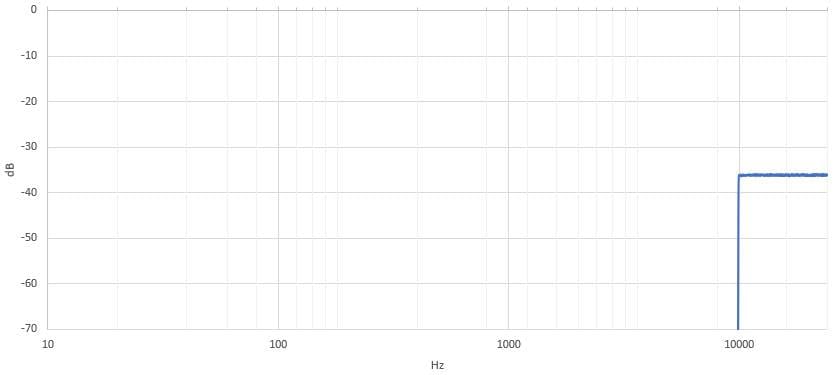
The LUFS-I is still high, -9.7, so it can be lowered by -4.3 during normalization; it may be necessary to note that the high frequencies above 10 kHz give the impression of being lowered more than the volume sensation.
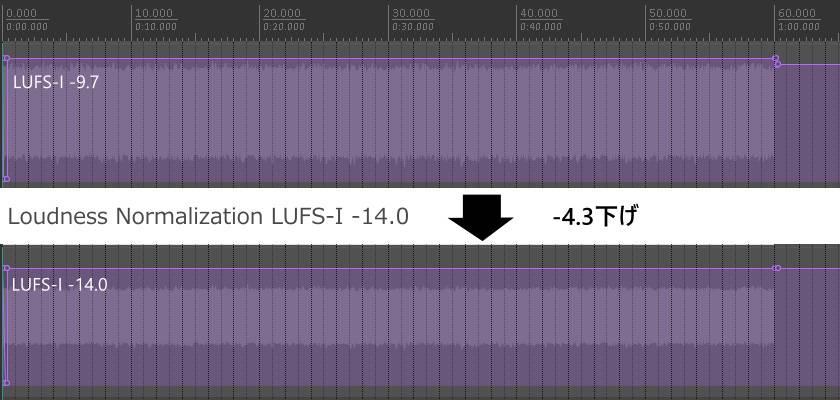
6. Waveforms that Gradually Grow Louder and Louder
Ravel's piece Bolero is an example of this pattern, where the sound gradually crescendos. It can also be called a linear fade-in section. The component is a case of white noise. When measured with a meter, the LUFS-I gradually increases and finally reaches -8.5. This can be lowered by -5.5 by normalization. 7.
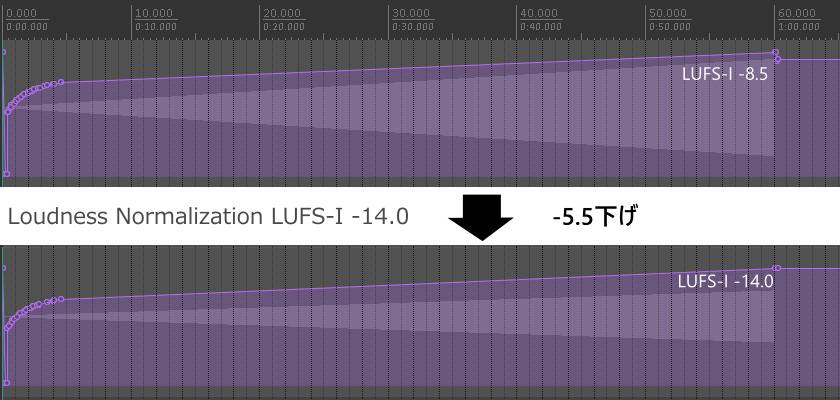
7. Gradually Decreasing Waveform
This is the opposite pattern of the above, where the LUFS-I gradually decreases from the maximum volume at Peak -3dB, resulting in the exact same waveform as above.
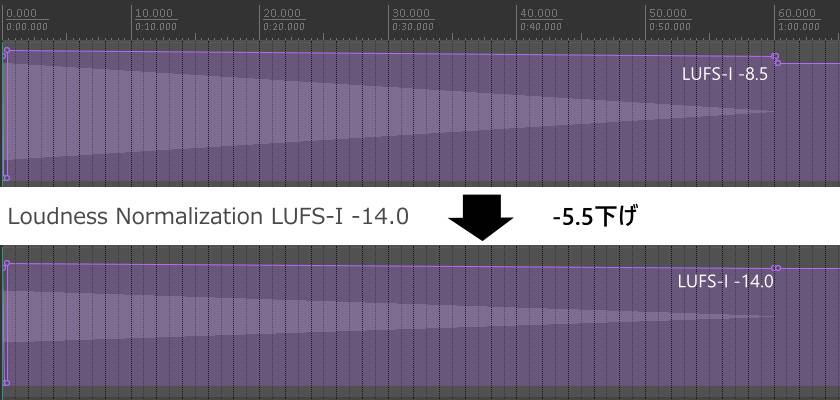
8. Waveforms with Absolute Gate Enabled
The first second is white noise at Peak -3dB, but after that it is much quieter at -70dB. The loudness meter first measures the maximum volume as -5.5, then the absolute gate is activated, the quieter sections are ignored, and the final LUFS-I is determined to be -5.5. Even if most of the sections are at the silent level, the normalization will lower the volume by -8.5. This is something to keep in mind when uploading to the platform.
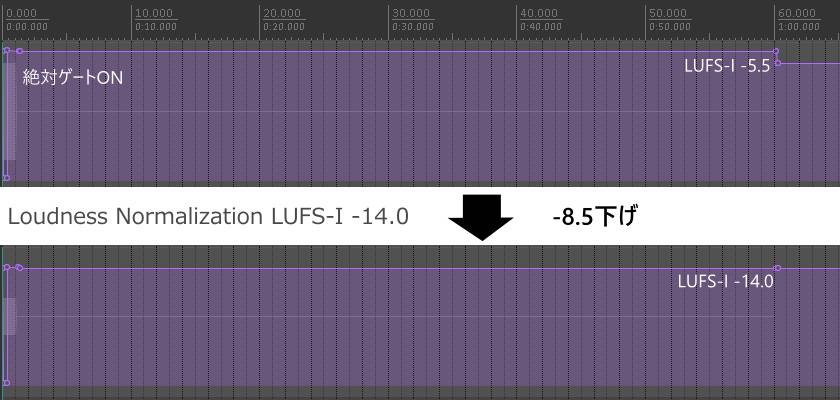
9. Waveform with Relative Gate Enabled
Similar to above, but with a higher level of -23dB in the quieter section. Otherwise, it is the same. Despite the higher overall energy content, the final LUFS-I is determined to be as low as -20.8, and the normalization does not adjust the level. The comparison may seem like a somewhat unreasonable result, but it means that we need to understand how absolute and relative gates work.
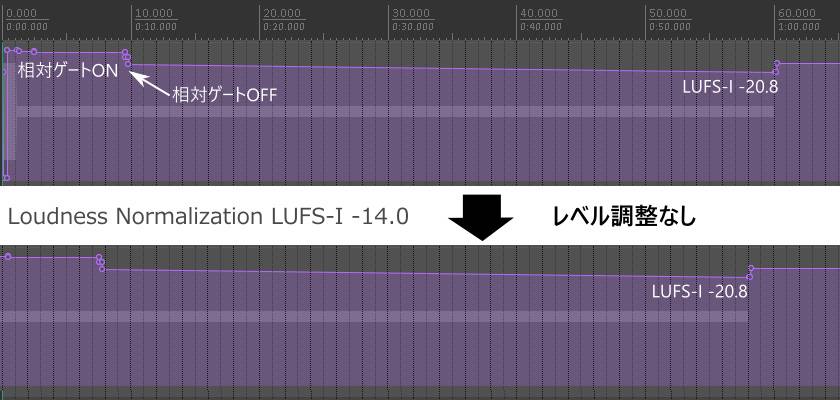
As it can be seen from the absolute and relative gates above, loudness normalization can produce quite different results depending on the conditions. I won't go into the details, but if you know the principle, it is possible to intentionally keep the LUFS-I at about -14 while dramatically increasing the audible loudness. However, that would be a repeat of the sound pressure competition, so you want to keep a natural balance in mind.
Instantaneous Peaks Forebearance
Since LUFS-I is calculated in 400ms units, instantaneous peaks do not raise LUFS-I by too much. This means that LUFS-I will not be raised too much even if peaks such as percussion are around -2 dB.

To summarize
LUFS-I is an item that should always be checked when uploading to a platform, but I don't think there is much need to pay any attention to it from the time of production. Excessive sound pressure increase in the days of the sound pressure competition is also a style of such a thing, and it does not mean that the sound in itself is bad. The problem was that it became difficult to balance the sound with others, and the difference between the two is not noticeable. In fact, volume balance varies from period to period and genre to genre, and while it would be ideal to maintain such diversity and balance, it seems impossible to begin with.
Still, the loudness normalization LUFS-I-14 value seems like a good compromise. I feel that if the sound is normalized with this value and heard with other songs as intended, it can be confirmed that the sound source is free from strange bias. Even if you want to increase the sound pressure, if you overdo it, the sound will sound tinny and muffled. If this is the case, we can decide that it is better to make some adjustments. I think that utilizing loudness normalization as an objective viewpoint can be beneficial as a whole to the user.
The “sound & person” column is made up of contributions from you.
For details about contributing, click here.











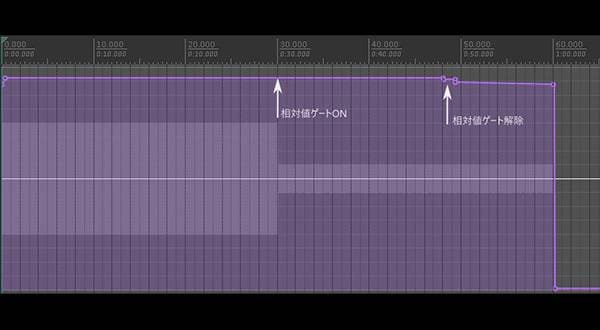
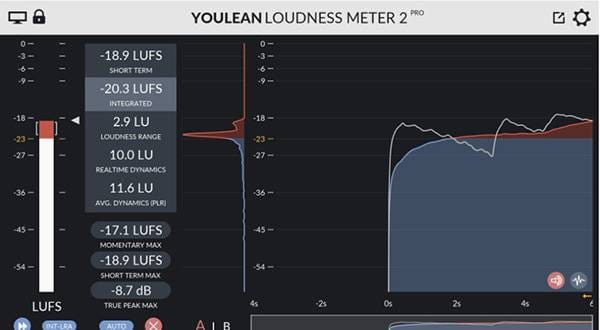
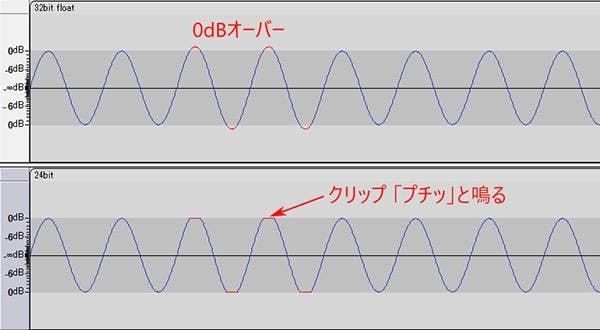



 iZotopeが手がけるオールインワンDAW “Spire”
iZotopeが手がけるオールインワンDAW “Spire”
 Focusriteオーディオインターフェイスで始める音楽制作
Focusriteオーディオインターフェイスで始める音楽制作
 TOONTRACK 特集
TOONTRACK 特集
 XLN AUDIO 特集
XLN AUDIO 特集
 UR-RT4 ソフト音源やループ素材をリアンプ
UR-RT4 ソフト音源やループ素材をリアンプ
 DTM・DAW購入ガイド
DTM・DAW購入ガイド















